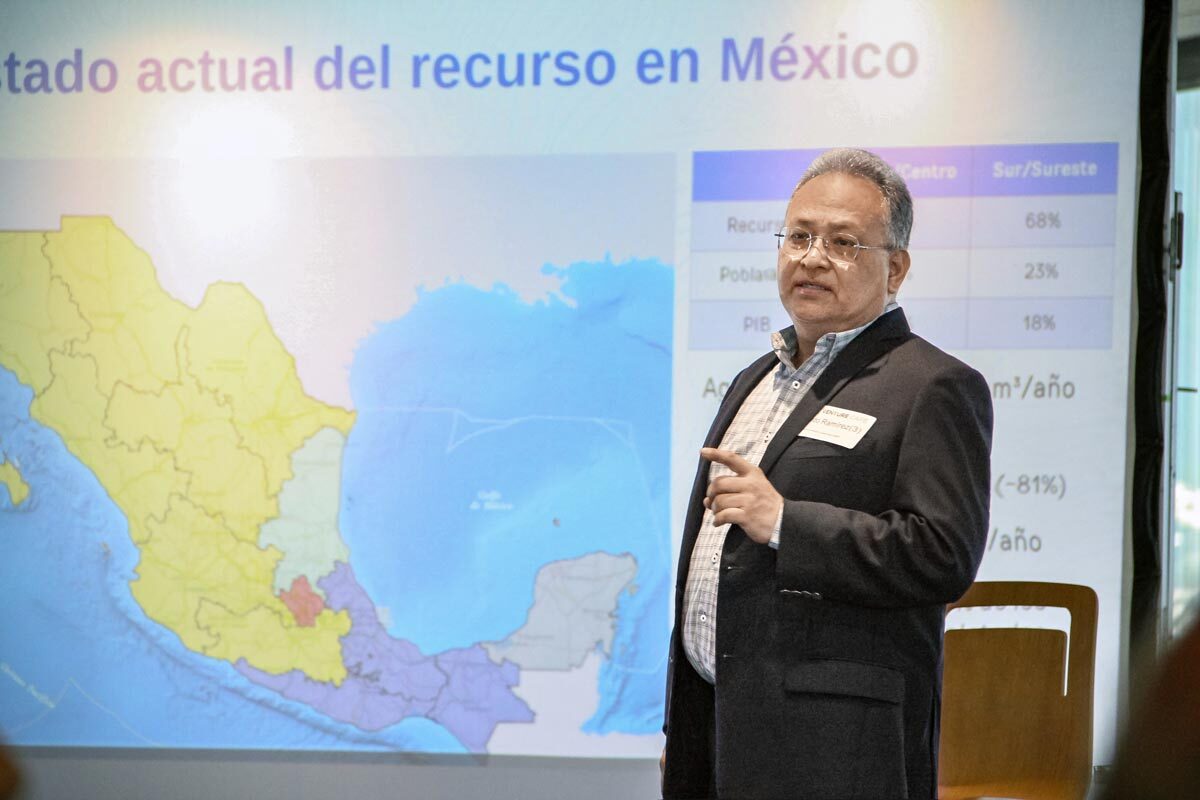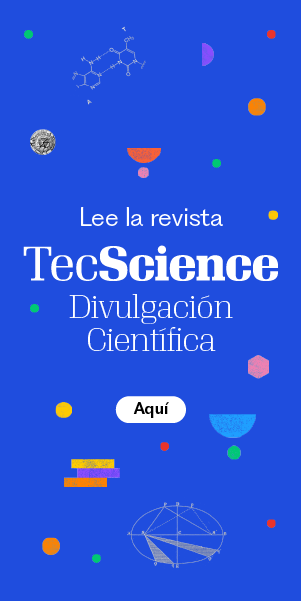Times Higher Education (THE) publishes the rankings in which it classifies universities, specifically those that focus on scientific research, around the world. The first in the list are those that get the best scores.
Due to its methodology and the reliability of its statistical analysis, its rankings are considered among the most important worldwide.
“Our goal is to help universities understand where they can improve,” says David Watkins, managing director of the Data Science team at THE, in an interview with TecScience.
Their methodology is based on thirteen carefully designed performance indicators, which are grouped into five areas: teaching, research, citations, international outlook, and industry outcome.
During the event THE Latin America Universities Summit, held on July 3 and 4, 2023, at Campus Monterrey, Watkins delved into what is behind their rankings, what could be improved in Latin American universities, and the potential he sees in them. “There is real strength and real potential,” he said.
A guide to making decisions
What is the goal of Times Higher Education?
We’ve been referred to in the past as the global Ministry of Education. There isn’t really a global Ministry of Education, but people feel we’re the closest thing to it because we’ve got data that are aligned across the world.
Part of our mission is really to A, build the rankings, and B, work with universities to help them understand what can be improved.
That’s one of the reasons for coming to an event like this, for having these events, to make sure that people really understand some of the data that’s sitting behind.
What are your duties and responsibilities as the leader of the Data Science team at Times Higher Education?
I think there are two main parts to the job. One is leading the team, which is responsible for producing all the rankings that we do, so that goes from collecting the data, validating the data, making sure it’s accurate, and then producing the rankings.
The hardest part of any data science is actually getting hold of good-quality data. I’ve been doing this for longer than I care to remember, and I have a rule of thumb: machine-generated data is generally quite good, and human-generated data is generally awful.
One of our data sets is we get data from universities but a lot of that is human-generated, so a big part of our challenge is to make sure that we’ve got good quality data. It sounds easy, but it’s not, it’s kind of the hard part of the job.
Then we use a lot of fairly advanced statistical techniques to ensure that we come up with a ranking that is aligned with the methodology and explainable to the outside world. A big part of what we want to do is be very transparent in how we produce these rankings.
Part of that date is our global reputation survey. This year 39,000 academics responded saying which institutions they think are good. So, we take all that data, the survey, and combine it together to produce the rankings.
The second part is to do an analysis of the data that we get from rankings and other sources to help universities, governments, and the industry to understand more about the university sector and what can be improved in it.
Why do you think these rankings are relevant?
When we talk to people outside the university, students and parents, we’ll say that the rankings we do should be used as a guide to help make a choice, but we never say you should look at rankings and make your choice based only on them. Use it as a guide, use it as part of your decision making.
And it’s not just the overall score, we have it divided by subject as well, so we can break that down. Some universities could be strong in computer science, and some could be strong in humanities, for instance, so you can dive into the data to learn more.
If I look at my home country, the United Kingdom, we have a group of 24 universities called the Russell Group. If you look at the US, there are nine universities called the Ivy League. How do you get into the Ivy League or the Russell Group? Well, if you’re part of the initial group. And then there’s no relegation from those groups, so we think it’s very important to have an external metric that is globally aligned that can say how we feel they rank.
And I think there’s another side of this which is research grants. Getting them is partly about reputation and one way to get a good reputation is if you’re well-represented in university rankings.
I do think it’s important for universities, though, to not chase their way up the rankings, we believe that’s a very short-term approach. What we really are interested in is universities, and I think Tec de Monterrey is a great example of this, setting a strategy, understanding what their strategy is, executing that strategy, and then you’ll naturally go up the rankings in a very healthy way. I think that’s very important too.

The potential of Latin American universities
Speaking about Latin America as a region, what do you think are some of the challenges we have to work on to improve universities and research in general?
If I’m honest, I think Latin American universities are not as good as they could be. I don’t think their reputation is as strong as it could be.
However, one of the interesting things we’ve seen in the rankings is if we look at the very top universities in Latin America, the top four or five, and I would include Tec de Monterrey in that, they’re actually doing very well.
If I look at the trends over the last seven years, what I can see quite clearly is that those very top Latin American universities are improving faster than the global average for the top universities around the world. So, there is real strength and real potential.
However, I think the universities outside the top are not advancing as well as they could, and I think there’s a number of reasons for that. One is reputation, if I’m industry and I don’t know much about the university section and I’m looking for research partners, I wouldn’t naturally think of Latin America. I think that’s one of the challenges that Latin America has to overcome.
Another is the role of government. If I look at Europe, for instance, the European Union provides a lot of support to universities. In the U.S you also get a lot of funding, if you look at Australia, they attract a lot of international students. So, different countries have different strengths and different models so they can tap into governments, and I think there’s a lack of unified support in Latin America in general.
One of the things I’ve heard today and yesterday is that governments are supporting their public universities but not their private ones, even if they’re not-for-profit, and I think in general this needs to be looked at a little more holistically.
One of the things governments could do is help strong universities improve. If you can, for example, help Tec de Monterrey become a better university, that will affect all the universities in Mexico, because people suddenly start looking a bit closer at them. What we call the star effect.
What do you think Latin American universities excel at?
I’ve already mentioned the excellence of the really top universities, but we also do the Impact Ranking, which is aligned with the United Nations sustainable development goals and there we see Latin American universities are really adding to the global effort around that.
Tec de Monterey again is an example of this; it’s 92nd in the world in the impact ranking. There are few Latin American universities in the top 200 of the world university rankings.
Latin America is in a very strong position because it has huge biodiversity, you’ve got the Amazon rainforest, which are like the lungs of the world, and I think there’s a real advantage you’ve got there.
I think the impact ranking is a way to showcase the fact that they’re so strong within these sustainable goals because that’s the future of the planet, and the fact that Latin America is showing some real strength and leadership is very encouraging for the region.
The future of THE
What does the future store for Times Higher Education?
I think we’ll always look to improve the rankings; we’ll always look to create a new ranking where we think it’s appropriate.
Our mission, again, is really to help universities and their associated governments, corporates, students, and that’s become more and more part of what my team is involved in. We’re starting to do a lot of work with governments around the world that are talking to us and they’re asking if we could build a ranking for them and how they can create excellence.
And I think that’s a big part of what we want to be able to play is to help governments improve their higher education sector, so you have the maximum advantage for the students and maximum advantage for the UN Sustainable Development Goals.
The evaluation
1. Teaching:
What is their reputation, in terms of education, among members of academia. How many PhDs are earned compared to bachelor’s degrees, how many of their staff have PhDs, and so on.
2. Research:
What is their reputation, in terms of research, among members of the academy. How much income is generated through it and how productive is it.
3. Citations:
What is the role of the university in spreading new knowledge and ideas. How often do authors from there get cited in books or research papers.
4. International outlook:
How relevant it is to the international community. How many international students, teachers, researchers and staff do they have? How much do they collaborate with universities in other countries?
5. Industry income:
How involved is the university with businesses and how much do they use their research to develop their products or services.
Each of these categories represents a percentage of the total score, where teaching accounts for 30%, research 30%, citations 30%, international perspective 7.5%, and industry engagement 2.5%.


















